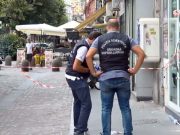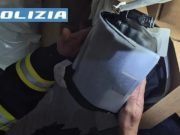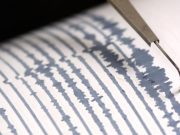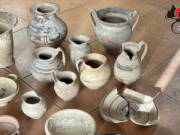A Salerno, diving is only prohibited in two stretches of the sea. Yet, the days of bathers in the peak of July continue to be ruined by brown patches, foam, and not exactly clear water. Just over an hour and a half. No more. That’s how long the day at the beach lasted for the earliest beachgoers in the eastern area of the city, during a summer weekend enveloped by heat. A big misfortune (an old acquaintance) that rhymes with the nightmare of dirty sea spoiled their plans. We’re back to square one. The unwanted guest paying a visit to the coastline of the city. Among the most affected by the inconveniences are the bathers of Torrione, in the strip of coast between the municipal pools and Lungomare Marconi, near via Perito. Caught in the grip of the greenish and sometimes foamy sea patch, the bathers didn’t have many alternatives. Some continued to take baths to cool off from the suffocating heat. And some decided to settle for a walk on the beach, dipping their feet in the water. The excessive heat may have triggered the natural phenomenon caused by the decay of algae, related to the warming of the water. But some suspect possible sewage discharges as well. In any case, it is a precarious situation that clashes with the tourist image of the city in the peak of the summer season.
“The mayor Napoli has made the necessary reports to the competent authorities. Because citizens and bathers must be respected, as well as the tourist image of the sea, which is an important economic driving force,” says the councilor for tourism and productive activities, Alessandro Ferrara, who proposes an anti-pollution solution for the sea. “Creating barriers that can block currents and dangerous discharges is not an impossible solution to implement,” says Ferrara, the same solution has been implemented on the Amalfi Coast. Bathers need answers. And perhaps a rubber cord at a distance from the coast could block waste, dirt, and everything that floats. The issue of the sea is one of the most delicate, I believe that a city by the sea should be able to enjoy its own sea and offer tourists a decent image of the sea. I believe that strict control is essential to punish those who really pollute and how they pollute. I think – adds Ferrara – about the discharge into rivers: the responsible parties must be identified by the competent authorities. Controls on boaters would also be desirable. It is also true that we pay the price for the current system from neighboring municipalities.” But what is the official state of health photographed by the regional agency of ARPA? The sampling data dates back to the end of June. The diving prohibited areas are the sea in front of the mouth of the Irno (180 meters east of the river to the municipal pools), where the presence of E. coli and intestinal enterococci out of control has been found; the same negative situation is recorded on the free beach from Fuorni to the Picentino river, where the water is not suitable for bathing and of highly poor quality. In Torrione, the samples taken on June 20th showed “good” water quality, although with reduced presence of E. coli and intestinal enterococci. The stretches of sea in Mercatello (between Lungomare Marconi and Lungomare Colombo) are classified as “excellent,” as well as the one in front of Lungomare Colombo up to the Santa Margherita stream. The sea water in the city is excellent up to via Leucosia, as well as the beach south of the Marina d’Arechi port up to the mouth of the Fuorni river. From dirty sea to traffic odyssey. For bathers heading to the free beach between Salerno and Vietri, it was a hellish Sunday. Between illegal parking near the roundabout of via Ligea and cars lined up on the Gatto viaduct, there were many inconveniences that caused traffic chaos.























